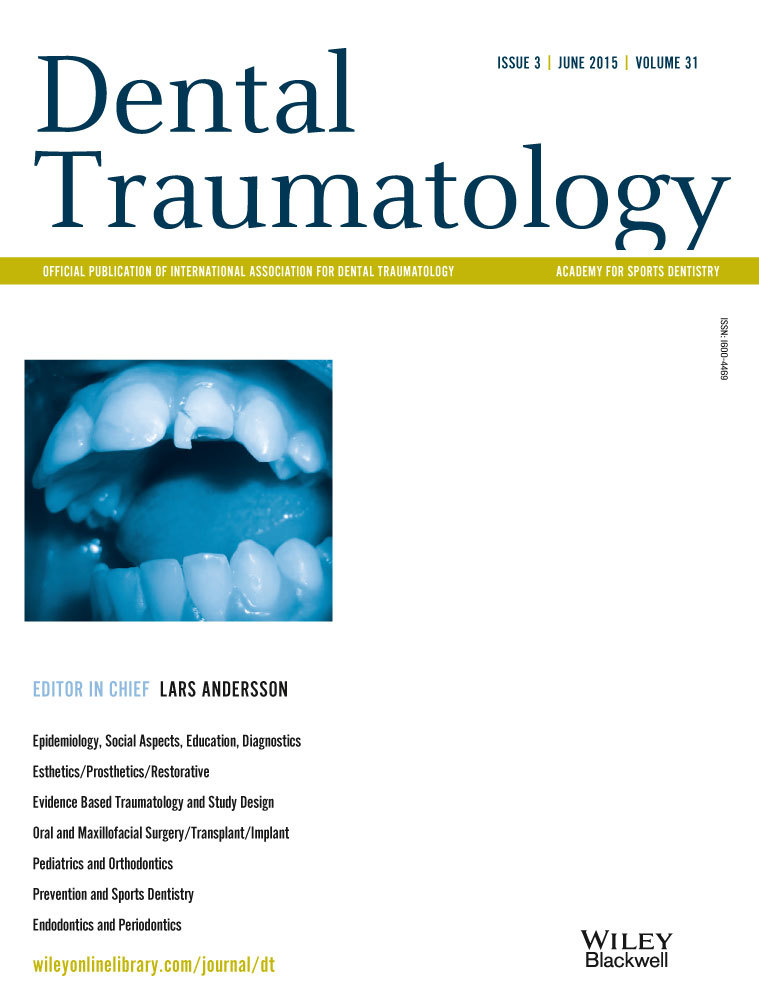Long-term follow up of 103 ankylosed permanent incisors surgically treated with decoronation – a retrospective cohort study
Abstract
Background/Aim
Decoronation is a technique developed in 1984 to remove ankylosed teeth and increase marginal bone levels in young, growing individuals. This retrospective cohort study evaluates marginal bone development after decoronation in relation to gender and age at treatment.
Materials and methods
The study evaluated all 95 patients with 103 ankylosed permanent incisors treated with decoronation at the Eastmaninstitutet Department of Pediatric Dentistry during 1978–1999. Mean age of the patients was 10.7 years (6.8–17.8) at the time of trauma and 14.9 years (9.3–22.0) at decoronation. The mean follow-up period was 4.6 years (1.0–19.3 years). The study evaluated development of the marginal alveolar bone level with a three-point scoring system: 1 = Unchanged or reduced alveolar bone level, 2 = A moderate increase in alveolar bone level, and 3 = A considerable increase in alveolar bone level. The final group for statistical evaluation comprised 75 patients: 56 boys and 19 girls who had only one tooth decoronated. Kappa statistics showed almost complete agreement between the two observers (κ = 0.90).
Results
Bone level changes were significantly correlated (P < 0.05) to gender and age at treatment. In decoronations performed after the age of 16, bone levels were unchanged or reduced, while decoronations performed at a mean age of 14.6 years in boys and 13 years in girls yielded a considerable increase in bone levels.
Conclusion
This study indicates that age at decoronation is an important factor for favorable development of the alveolar ridge and that decoronation should be performed earlier in girls.




